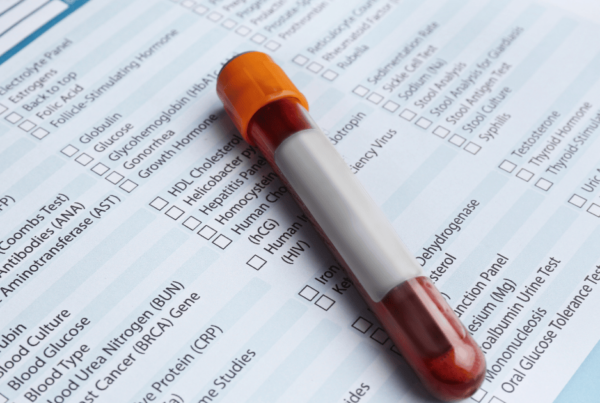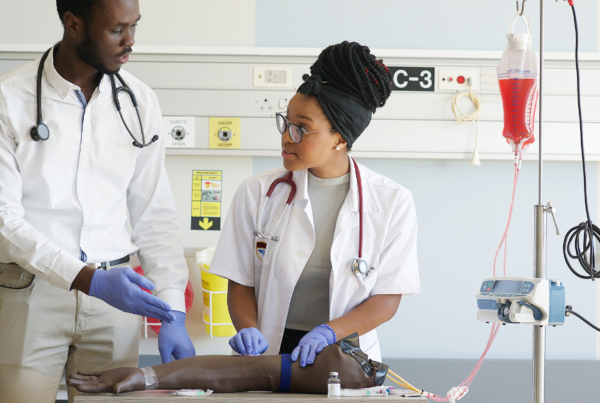Understanding the significance of Phlebotomy Needle Gauges is crucial. Higher needle gauge numbers, in contrast to other measurements, indicate thinner widths instead of greater sizes. Choosing the right venipuncture needles requires an understanding of this inverse relationship. The choice is based on balancing criteria such as vein caliber, necessary blood volume, flow rates, and patient age/health, as there is no universally optimum gauge and sizes range up to 18G.
The comprehensive manual examines the popular phlebotomy needle gauges used to take blood samples and describes the sizes, functions, and uses. Find out everything you need to know about selecting the ideal venipuncture needle fit by reading on.
Understanding Phlebotomy Needle Gauges
| Key Takeaways |
| Choosing the right needle gauge for venipuncture is crucial for successful blood draws. |
| Needle gauge refers to the size of the needle, with higher numbers indicating thinner needles. |
| The ideal needle gauge balances vein size, blood volume needed, flow rate, and patient age/health. |
| Common needle gauges used in venipuncture are 18G (largest) to 23G (smallest). |
| Other factors affecting successful venipuncture include safety features, bevel patterns, needle length, and phlebotomist’s skill. |
The Importance of Vein Size When Selecting Needles
Phlebotomy, or venipuncture, is the process of taking a blood sample by puncturing a vein with a needle. Tests for biomarkers and characteristics that offer information for patient monitoring and diagnosis may be performed on this blood. Common sample sizes are 5 to 25 milliliters, while certain specialized procedures call for more than 350 milliliters.
The ideal needle gauge facilitates blood flow without causing harm to the vein’s walls or surrounding tissue. Thinner needles are required for smaller veins. Children, the elderly, and sick patients all have fragile veins that need to be handled carefully. However, small needles restrict draw times and flow volumes. This is where the venipuncture needle gauge option balances out.
Overview of Common Needle Gauges for Venipuncture
Understanding Phlebotomy Needle Gauges – Phlebotomy Now
Even though 21G–23G needles are the most common, phlebotomists can easily tailor equipment to the veins at hand by knowing choices starting at 18G:
- The largest gauge in use is 18 gauge needle. Set aside for therapeutic phlebotomy and quick, large-volume blood removal during blood donations. permits rapid blood flow from dense veins.
- The standard needle size for regular venipuncture in adult arm veins is 21 gauge. The Goldilocks gauge allows for adequate flow without causing vein collapse. Green color coding helps to prevent medication errors.
- 22 Gauge: Occasionally used for blood draws using many vials. somewhat thinner to allow for smaller veins in kids and adults with lighter skin. Easily recognizable due to its black coating.
- The smallest gauge available for standard venipuncture is 23. “Butterfly needles” are effective for small veins in children, the elderly, and people with weak veins. From winged infusion sets, the hue is blue.
But why does gauge matter so much? And what exactly do these numbers mean?
Clearing Up Phlebotomy Needle Gauge Sizing Myths
As the gauge number increases, the needle diameter decreases. Consequently, a 25G needle is thinner than a 23G. Most measurements indicate greater things with higher numbers, therefore this is counterintuitive. Important details:
- 13G/14G large-bore IV catheters are the exceptions. Too big for everyday drawing.
- Range: 0.26mm–1.27mm diameters are represented by 26G–18G. Metric gauges are the standard.
- Increments: A 0.1mm diameter shift occurs every three gauge units. 23G is therefore 0.1 mm narrower than 20G.
- Increased accuracy using insulin syringes (31G) to optimize blood flow for transfusions (14G) is the goal.
This gauge conversion allows for purposeful size selection across this range.
Other Factors Affecting Results
Although it is crucial, the right gauge is not the sole factor that affects venipuncture results. Key factors also include safety and comfort features, bevel patterns, and needle length. Smooth blood collection is facilitated by training and the use of the right instruments for the job.
Understanding factors like vein depth, location, anchors, probes, and redirects, in addition to other evidence-based strategies for difficult draws, is essential for successful phlebotomy.
In Summary: Choosing the Right Needle Gauge
It takes both science and art to choose the right venipuncture needles, combining anatomical and physiological knowledge to balance the needs of the patient with precise diagnosis. Healthcare personnel can easily secure high-quality samples while avoiding collapse and discomfort by adjusting needle fit to the blood quantities needed and veins offered by understanding gauge sizing rules and uses. A correct fit facilitates patient therapy by allowing for precise diagnosis, making things easier for all parties involved.
FAQs
How does size and needle gauge relate to each other?
Contrary to most measurements, higher gauge numbers indicate thinner needles.
What factors influence choosing the right needle gauge for venipuncture?
Vein size, blood volume needed, flow rate, and patient age/health are all important factors to consider.
What are the most common needle gauges used in venipuncture?
21 gauge (green) and 22 gauge (black) needles are most commonly used, but sizes can range from 18 gauge (largest) to 23 gauge (smallest).
Why are smaller needles not always ideal for blood draws?
While thinner needles are better for fragile veins, they can also restrict blood flow and limit the amount of blood collected.
What other factors besides gauge size are important for successful venipuncture?
Safety features, bevel patterns, needle length, and the phlebotomist’s skill and technique all contribute to a successful and comfortable blood draw.
Enhance Your Skills: Hands-On Training with Needle Gauges
Improve your skills with different kinds of needles with our Phlebotomy Now Hybrid Course.
Enroll now to learn more about needle gauges and become a Certified Phlebotomist!


